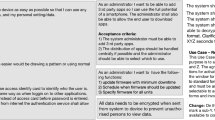Abstract
More resources are spent on maintaining software than for its development. Maintenance costs for large scale software systems can amount to somewhere between 40 and 67% of the total system life cycle cost. It is therefore important to manage maintenance costs, and to balance costs with benefits. Frequently this task is approached, at least in the literature, merely as a software cost estimation problem. Unfortunately, the creation of effort estimation models for maintenance – a primary requisite for cost calculation – has not yet been satisfactorily addressed. At the same time, project managers do not estimate costs first, but instead prioritize maintenance projects, trying to determine which projects to carry out (first) within their fixed budgets and resource capabilities. This essentially means that “cost estimation” is done qualitatively first before formal cost estimation techniques are employed. Recognizing the problems associated with standard, regression based estimation models, and focusing on the needs of software project managers, this research studied the process of project prioritization as an expert problem solving and decision making task, through concurrently taken (“think aloud”) protocols. Analysis of these protocols revealed that experts rarely make use of formal mathematical models to determine project priorities or resource needs, such as COCOMO or FPA, although project size is a key determinant of a project's priority. Instead, estimators qualitatively consider cost or value, urgency, and difficulty of a maintenance task, then prioritize projects accordingly, followed by a decision concerning further treatment of the problem. The process employs case based reasoning and the use of heuristics. While different experts may use different strategies, there exists great overlap in their overall prioritization procedure.
Similar content being viewed by others
References
E.L. Appleton, Call in the Cavalry before 2000, Datamation 42(1) (1996) 42-43.
R.D. Banker, S.M. Datar and C.F. Kemerer, A model to evaluate variables impacting the productivity of software maintenance projects, Management Science 37(1) (1991) 1-18.
R.D. Banker, S.M. Datar, C.F. Kemerer and D. Zweig, Software complexity and maintenance costs, Communications of the ACM 36(11) (1993) 81-94.
B. Boehm, Software Engineering Economics (Prentice-Hall, 1981).
M.J. Bouwman, The use of accounting information: Expert versus novice behavior, in: Decision Making: An Interdisciplinary Inquiry, eds. G.R. Ungson and D.N. Braunstein (Kent, 1982).
M. Bug, Pending disaster or hype? Business Communications Review 26 (December 1996) 12.
J. Celko, Start fixing year 2000 problems now! Datamation 42(1) (1996) 36-38. 202 CARR AND WAGNER
T. Chan, S. L. Chung and T.H. Ho, An economic model to estimate software rewriting and replacement times, IEEE Transactions on Software Engineering 22(8) (1996) 580-598.
S.D. Conte, H.E. Dunsmore and V.Y. Shen, Software Engineering Metrics and Models (Benjamin Cumings, 1986).
B.S. Curtis, B. Sheppard and P. Milliman, Measuring the psychological complexity of software maintenance tasks with Halstead and McCabe metrics, IEEE Transactions on Software Engineering SE-5(2) (March 1979) 90-104.
T. DeMarco, Controlling Software Projects: Management, Measurement and Estimation (Yourdon Press, 1982).
K.A. Ericsson and H.A. Simon, Verbal reports as data, Psychological Review 87(3) (1980) 215-251.
K.A. Ericsson and H.A. Simon, Protocol Analysis (MIT Press, 1984).
C. Jones, Year 2000: What is the real cost? Datamation 43(3) (1997) 88-93.
M. Jorgensen, Experience with the accuracy of software maintenance task effort prediction models, IEEE Transactions on Software Engineering 21(8) (1995) 674-681.
D. Kafura and G. R. Reddy, The use of complexity metrics in software maintenance, IEEE Transactions on Software Engineering SE-13(3) (1987) 335-343.
C.F. Kemerer, Software Cost Estimation Models in Software Project Management (Irwin, 1997).
C.H. Kepner and B.B. Tregoe, The Rational Manager (McGraw-Hill, 1965).
B. Lientz and E. Swanson, Software Maintenance Management (Addison-Wesley, Reading, MA, 1980).
A. von Mayrhauser and A.M. Vans, Identification of dynamic comprehension processes during large scale maintenance, IEEE Transactions on Software Engineering 22(6) (1996) 424-437.
G. Marchant, Analogical reasoning and hypothesis generation in auditing, The Accounting Review 64(3) (July 1989) 500-513.
T. Mukhopadhyay, S. Vicinanza and M.J. Prietula, Examining the feasibility of a case based reasoning model for software effort estimation, MIS Quarterly (June 1992) 155-170.
A. Newell and H.A. Simon, Human Problem Solving (Prentice-Hall, 1972).
N.F. Schneidewind, The state of software maintenance, IEEE Transactions on Software Engineering SE-13(3) (1987) 303-310.
D. Su and T. Govindaraj, Fault diagnosis in large dynamic system experiments on a training simulator, IEEE Transactions on Systems, Man and Cybernetics 16(1) (1986) 129-141.
E.B. Swanson and M. Beath, Departmentalization in software development and maintenance, Communications of the ACM 33(6) (1990) 658-667.
P. Todd and I. Benbasat, Process tracing methods in decision support systems research: Exploring the black box, MIS Quarterly (December 1987) 493-511.
A. Tversky and D. Kahneman, Judgement under uncertainty: Heuristics and biases, Science 185 (1974) 1124-1131.
I. Vessey, Expertise in debugging computer programs: An analysis of the content of verbal protocols, IEEE Transactions on Systems, Man, and Cybernetics SMC-16(5) (1986) 621-637.
S. Vicinanza, M.J. Prietula and T. Mukhophadhyay, Case based reasoning in software estimation, Information Systems Research 2(4) (December 1991) 243-262.
N.P. Vitalari and G.W. Dickson, Problem solving for effective systems analysis: An experimental exploration, Communications of the ACM 26(11) (1983) 948-956.
C. Wagner, Problem solving and diagnosis, Omega 21(6) (December 1993) 645-656.
C. Wagner and A. Hayashi, How to create winning product ideas, Journal of Product Innovation Management 11 (March 1994) 146-155.
W.K. Weiner-Ehrlich, J.R. Hamrick and V.F. Rupolo, Modeling software behavior in terms of a formal life cycle curve: Implications for software maintenance, IEEE Transactions on Software Engineering SE-10 (1984) 376-383.
R. West and D. O' Neill, Management of Software Maintenance (CCTA, 1993).
C.D. Wrigley and A.S. Dexter, Software development estimation models: A review and critique, in: Proc. of the ASAC Conference (1987) pp. 125-138.
S.S Yau and J.S. Collefello, Some stability measures for software maintenance, IEEE Transactions on Software Engineering 6(6) (November 1980) 545-552.
Author information
Authors and Affiliations
Rights and permissions
About this article
Cite this article
Carr, M., Wagner, C. A Study of Reasoning Processes in Software Maintenance Management. Information Technology and Management 3, 181–203 (2002). https://doi.org/10.1023/A:1013125112217
Issue Date:
DOI: https://doi.org/10.1023/A:1013125112217




